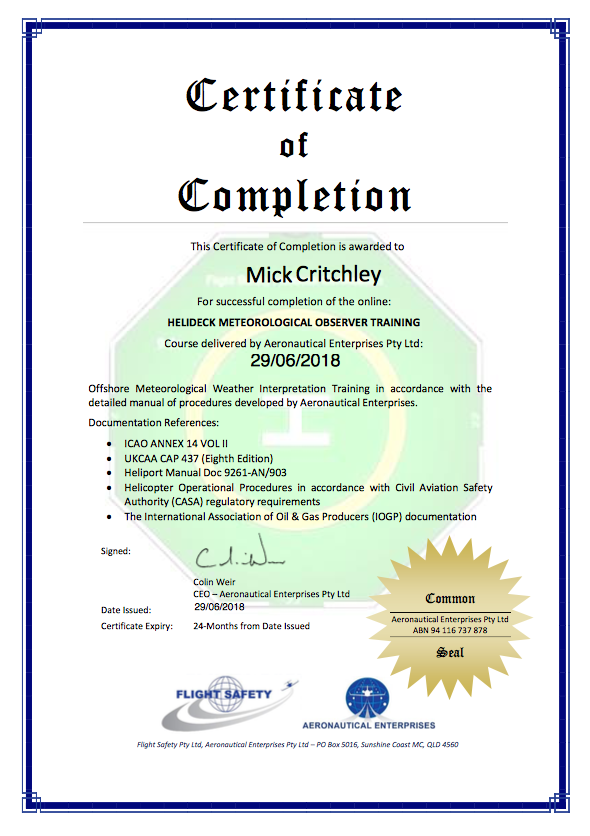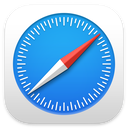Compiled 2021, Updated 2022 and 2023.
OFFSHORE METEOROLOGICAL WEATHER INTERPRETATION TRAINING (OMWIT) COURSE PROFILE
OMWIT ONLINE course - AUD$600*
The aim and objectives of OMWIT training is to enable participants to understand, interpret, document and report weather systems for offshore helicopter operations.
Who should enrol in this course?
UKCAA CAP 437 now requires any person on the helideck, involved in weather reporting, to undergo OMWIT training. This applies specifically to the HLO and HDA's.
What is the significance of the OMWIT course?
- Accurate, timely and complete meteorological observations are necessary to support safe and efficient helicopter operations. Correct weather reports are needed for flight planning and safe operations.
What does the course cover?
This online certified course, provides the crew member with a comprehensive and in-depth insight into the significant aspects of offshore weather that is of most importance to the helicopter pilot, including:
- Landing area height above water level
- Wind direction
- Helideck movement
More specifically, the course includes but is not limited to:
- Offshore Weather Reporting legal references
- Meteorological equipment
- Weather patterns, including:
- Temperature
- Humidity
- Air pressure
- Wind
- Clouds
- Precipitation
-
- Offshore weather reporting and documentation
*PAYMENT NOTES:
If, due to some country specific security restrictions, you are unable to pay by Credit Card please contact office@flightsafety.com.au or or call +61 (0) 7 54482788 and we will send through an invoice with a direct payment option.
Once you have paid the Invoice, re-enrol and choose the Purchase Order Payment Option.
Then add your Receipt Number and we will verify your payment so you can begin the course.
Here is the course outline:
1. INTRODUCTIONThe latest edition of UKCAA CAP 437 Edition 9, 2023 now requires meteorological weather interpretation training. This online training course which coverers this requirement has been developed by the Flight Safety Group. The certificate will be valid for two years and is specific to offshore operations. 5 sections
|
|||||
|
2. OPERATIONAL WEATHER STANDARDSThis module covers the important aspects of weather interpretation for offshore reporting, including the landing area height above water level, wind direction, helideck movement and the requirements for a Helideck Monitoring System (HMS) 2 sections
|
||
|
3. METEOROLOGICAL REQUIREMENTSThe requirements for Meteorological reporting include all the different types of equipment used, the manner in which information is reported and the training requirements of the people who will be using these instruments. 2 sections
|
||
|
4. WEATHER PATTERNSThere are six main components to weather: temperature, humidity, pressure, wind, clouds, and precipitation.These are defined and explained in this module. In addition, the hazards associated with each are highlghted. 4 sections
|
||||
|
5. WEATHER REPORTINGSpecific standards and practices are required for offshore weather reporting. The recognised formats for reporting are described in this module and examples of reporting format, including templates and internationally agreed radio etiquette, are provided here. 4 sections
|
||||
|
6. COURSE FEEDBACKPlease complete these 5 questions to submit your feedback on this course. 1 section
|
|
|
7. COURSE COMPLETIONOMWIT Course Completion 1 section
|
|
|
Completion
The following certificates are awarded when the course is completed:
 |
Certificate of Completion - OMWIT |



